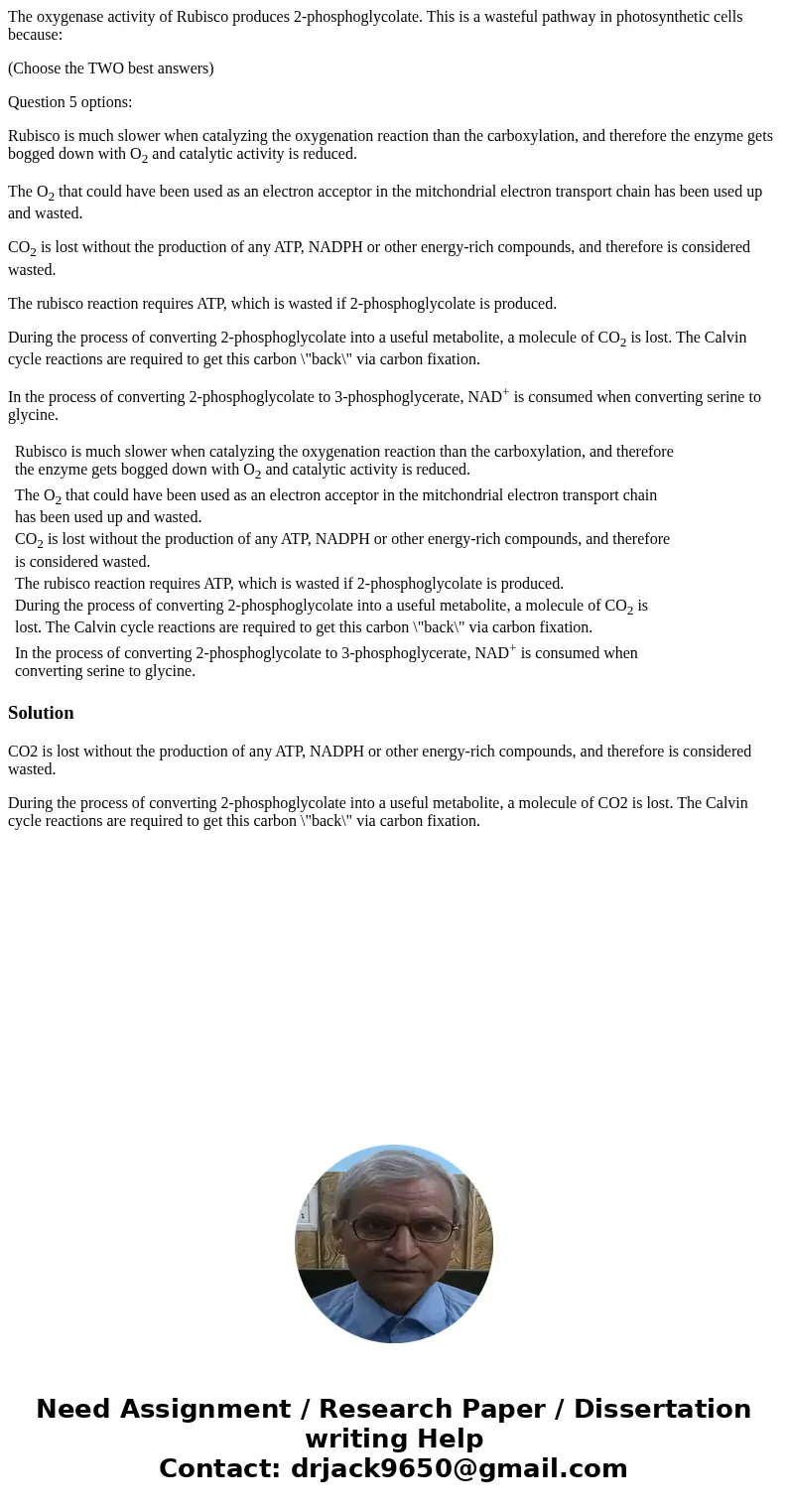The oxygenase activity of Rubisco produces 2phosphoglycolate
The oxygenase activity of Rubisco produces 2-phosphoglycolate. This is a wasteful pathway in photosynthetic cells because:
(Choose the TWO best answers)
Question 5 options:
Rubisco is much slower when catalyzing the oxygenation reaction than the carboxylation, and therefore the enzyme gets bogged down with O2 and catalytic activity is reduced.
The O2 that could have been used as an electron acceptor in the mitchondrial electron transport chain has been used up and wasted.
CO2 is lost without the production of any ATP, NADPH or other energy-rich compounds, and therefore is considered wasted.
The rubisco reaction requires ATP, which is wasted if 2-phosphoglycolate is produced.
During the process of converting 2-phosphoglycolate into a useful metabolite, a molecule of CO2 is lost. The Calvin cycle reactions are required to get this carbon \"back\" via carbon fixation.
In the process of converting 2-phosphoglycolate to 3-phosphoglycerate, NAD+ is consumed when converting serine to glycine.
| Rubisco is much slower when catalyzing the oxygenation reaction than the carboxylation, and therefore the enzyme gets bogged down with O2 and catalytic activity is reduced. | |
| The O2 that could have been used as an electron acceptor in the mitchondrial electron transport chain has been used up and wasted. | |
| CO2 is lost without the production of any ATP, NADPH or other energy-rich compounds, and therefore is considered wasted. | |
| The rubisco reaction requires ATP, which is wasted if 2-phosphoglycolate is produced. | |
| During the process of converting 2-phosphoglycolate into a useful metabolite, a molecule of CO2 is lost. The Calvin cycle reactions are required to get this carbon \"back\" via carbon fixation. | |
| In the process of converting 2-phosphoglycolate to 3-phosphoglycerate, NAD+ is consumed when converting serine to glycine. |
Solution
CO2 is lost without the production of any ATP, NADPH or other energy-rich compounds, and therefore is considered wasted.
During the process of converting 2-phosphoglycolate into a useful metabolite, a molecule of CO2 is lost. The Calvin cycle reactions are required to get this carbon \"back\" via carbon fixation.

 Homework Sourse
Homework Sourse